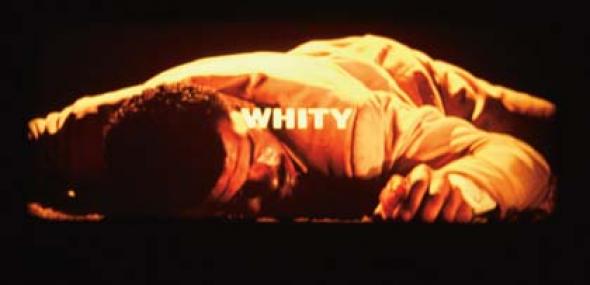The 5th Werkleitz Biennial
Christian Katti reviews the 'Documenta of the East'
Don’t worry if you don’t know where Tornitz and Werkleitz are. Most Germans don’t either. A bus-shuttle commuted twice a day to-and-from Berlin, Alexanderplatz, to take people to the most everyday, nostalgic, post-socialist middle-of-nowhere, 40 km south of Magdebourg in Saxony-Anhalt. A pond near the venue helped make the country trip almost perfect, as did the fair summer weather.
The 5th Werkleitz Biennial was a five day festival with numerous film/video programmes, musical and live events, various forums, and an extensive exhibition of around 30 works by over 40 international artists. The work ranged from multimedia and video installations to participatory projects. Many of these works had been created especially for the Biennial and were closely related to the three conceptual points of departure that the curators had chosen to frame the event. These were Rainer Werner Fassbinder’s western melodrama Whity (1970); the 10th World Festival of Youth and Students in East Berlin (1973); and the phrase-as-question ‘Open Borders?’ Added to this was the somewhat cryptic title ‘Zugewinngemeinschaft’ (Community of Surplus) which can be interpreted in at least two ways: as the ‘common ideology of profit’, and as a more positive, even utopian understanding of what a better society might look like.
As part of the exhibition Martin Conrath and Marion Kreißler installed over 100 reproductions of East and West German election posters produced over the past 30 years throughout the two small villages. These interacted with contemporary campaign posters for the local state parliament. The historical as well as the ideological distance between the rhetoric of the communist and the capitalist election campaigns created a strange scenario: ‘freedom by means of socialism’ versus ‘freedom instead of socialism’. The half-life of the election promises and their ‘identity politics’ added to this eerie proximity of distance.
Henrik Olesen’s contribution Rauminstallation took place in the rented room of a private home and contained seven short films by the Homosexuellen Interessengemeinschaft Berlin, HIB (Homosexual Interests Community) from 1978. Olesen found these remarkable super-8 films in the archives of the Schwules Museum, (Gay Museum), Berlin. They showed dance parties and country excursions by the ‘community’, as well as pedagogical information on various East German cruising zones. In addition to this, Olesen exhibited a small selection of gay-lib documentary photographs and Homosexual Rights Around the World (2000), a piece which listed contemporary legal issues facing homosexuals from the death penalty to discrimination.
 > Henrik Olesen, Rauminstallation, video, photographs and text, 2002
> Henrik Olesen, Rauminstallation, video, photographs and text, 2002
Many artists referred to Fassbinder’s film Whity which, because of its failure to gain general release, remains one of his least known films. Nevertheless, according to Marc Siegel, it is ‘one of his most fascinating and relevant films for contemporary discussions of race and sexual desire.’ Dierk Schmidt’s comment on Whity consisted of a faked sketchbook purporting to have been used by Fassbinder at the time of the film’s production. Also, in relation to Whity, Branwen Okpako displayed a video installation Seh’ ich was, was Du nicht siehst? (Can I see something you can’t?) that shows two mixed race actors watching and commenting on the film.
The extensive catalogue-newspaper that accompanied the festival was priced at just one euro, an appropriately ‘utopian’ price for this so-called ‘documenta of the East’ – in the middle of nowhere, i.e. utopia.
The 5th Werkleitz Biennial // 31 July-4 August 2002 // http://werkleitz.de/events/biennale2002 // The video documentation Zugewinngemeinschaft directed by Peter Zorn, is available from Werkleitz Gesellschaft e.V. / punktum FILM GmbH.
Christian Katti <ckatti AT gmx.net> is a doctoral candidate in philosophy. He lives in the United States and Berlin.
Mute Books Orders
For Mute Books distribution contact Anagram Books
contact@anagrambooks.com
For online purchases visit anagrambooks.com








